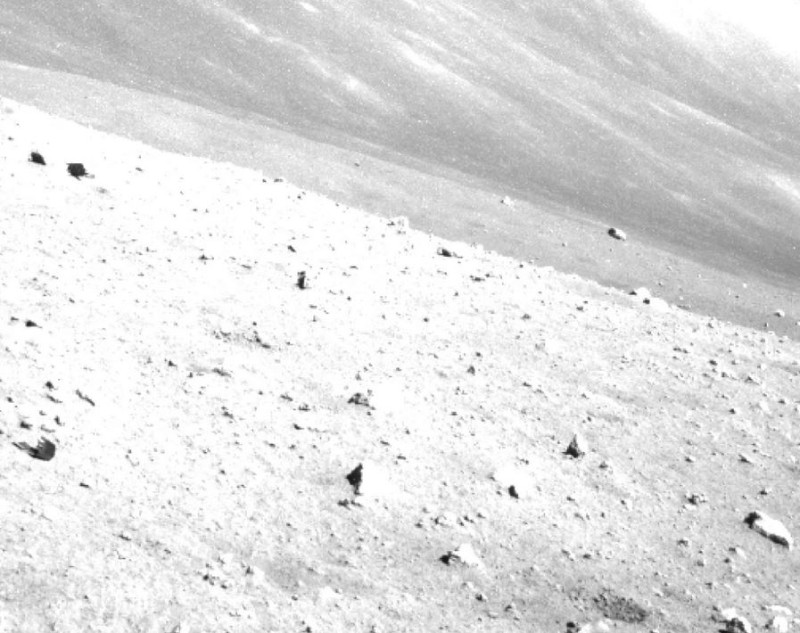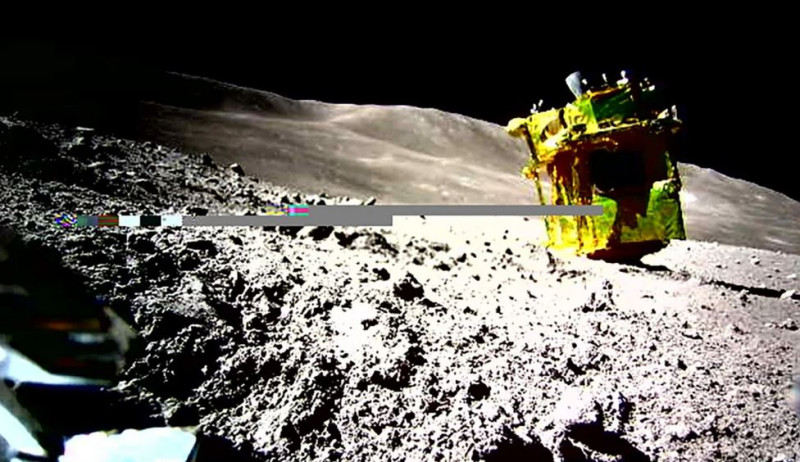The rover landed on the lunar surface on January 19 – After each lunar night it ‘wakes up’ and sends pictures to Jaxa
All expectations were exceeded by the endurance of the Japanese Moon Sniper spaceshipwhich has been sent on an exploration mission to the Moon.
For the 3rd lunar night, the Moon Sniper managed to survive the harsh conditions of the Moon, despite not being designed for it. In fact, it also sent new photos from the surface of the Moon, causing excitement in the Japanese Aerospace Exploration Agency.
Temperatures during a lunar night can drop to minus 133 degrees Celsius, and the Moon Sniper was not expected to survive even a lunar night, which is a period of darkness on the moon that lasts about two weeks.
The robotic vehicle, also known as SLIM, or Smart Lander for Investigating Moon, originally landed on the lunar surface on January 19. The historic feat made Japan the fifth country to walk on the Moon. The spacecraft landed near Shioli Crater, located about 322 kilometers south of the Pacific Ocean, an area near the lunar equator where Apollo 11 first landed humans on the moon.
But things did not go according to plan. During the descent, the spacecraft encountered an anomaly and landed on its nose, which meant that its solar panels were facing west rather than upright and were not receiving the necessary sunlight to generate power. The aircraft had enough energy to send back a mosaic of images before shutting down. The mission team in Japan remained optimistic that once sunlight could reach the solar panels again, the spacecraft could “wake up.”
So far, the Moon Sniper, which earned its nickname for the precision technology that allowed it to land about 55 meters (180 feet) from its target, continues to pleasantly surprise the team, waking up after each lunar night and shooting new ones. photos, which he transmits to Earth before falling asleep again.
The mission team contacted the Moon Sniper on April 23 after its third lunar night. The spacecraft was able to transmit more images from its landing site.
“SLIM maintained primary functionality even after 3 nights on the Moon, which was not expected by design,” a JAXA spokesperson said.
In addition to surviving the extreme cold of the lunar night, the Moon Sniper has also endured the terrible temperatures of the lunar day, which can reach 121 degrees Celsius, according to NASA.
The spacecraft has two navigation cameras positioned in different directions. Given the way the Moon Sniper landed, one of these cameras faces space, but the other has a view of the landing site from the spacecraft’s perspective.
Source :Skai
I am Terrance Carlson, author at News Bulletin 247. I mostly cover technology news and I have been working in this field for a long time. I have a lot of experience and I am highly knowledgeable in this area. I am a very reliable source of information and I always make sure to provide accurate news to my readers.












